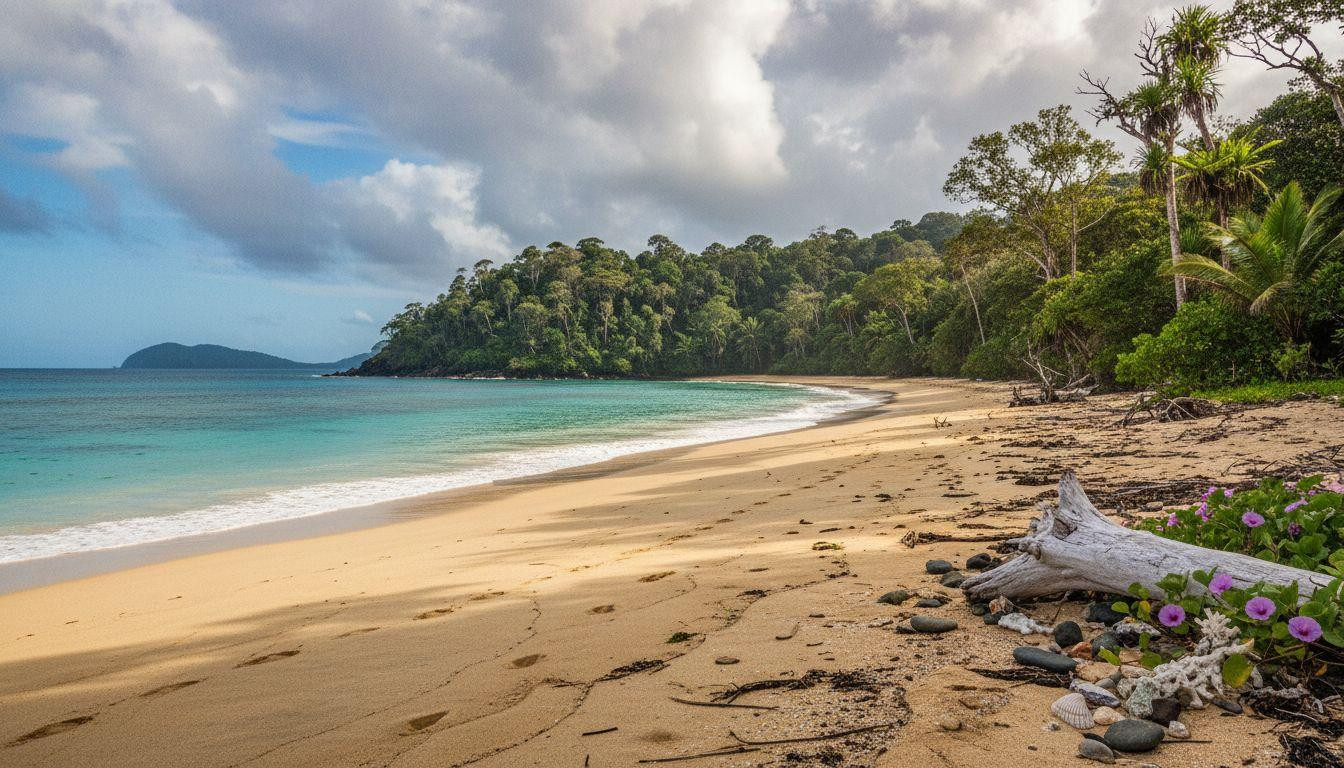At 5:30 AM on Cape Tribulation Beach, where 135-million-year-old rainforest meets turquoise Coral Sea, the only sounds are distant cassowary calls and gentle waves lapping golden sand. This remote headland in Far North Queensland delivers everything Cairns promises for Great Barrier Reef tourism, plus experiences Australia’s tourism capital simply cannot offer. Better yet, it costs 36% less while providing 83% fewer crowds.
Why Cairns reef tourism overwhelms even seasoned travelers
Cairns processes 2.8 million visitors annually, creating a reef tourism machine that prioritizes quantity over quality. Daily reef tours cram 80-120 passengers onto massive catamarans, with basic snorkel trips costing $250-300 per person. Accommodation averages $295-350 nightly for waterfront properties during November 2025.
The city serves its purpose as Queensland’s international gateway. Direct flights from Asia and extensive diving certification programs make Cairns essential infrastructure. However, this convenience comes at a cost: authentic wilderness experiences vanish under tourism pressure, replaced by commercialized reef encounters that feel more like theme park attractions than natural wonders.
Meet Cape Tribulation: where two UNESCO World Heritage sites converge
Cape Tribulation occupies the only place on Earth where two UNESCO World Heritage sites physically meet. The Daintree Rainforest (world’s oldest tropical rainforest at 135 million years) cascades directly to Great Barrier Reef waters, creating an ecological convergence found nowhere else globally.
Dual heritage creates unmatched visual drama
Emerald canopy towers 200 feet above pristine beaches where ancient ferns touch saltwater. Morning light filters through prehistoric trees while reef colors shimmer just offshore. The Whitsundays offer stunning reef access, but Cape Tribulation’s rainforest backdrop creates compositions impossible anywhere else in Australia.
The numbers reveal Cape Tribulation’s hidden value
Just 150,000 annual visitors experience this convergence, compared to Cairns’ 2.8 million – an 83% crowd reduction. Eco-lodge accommodation ranges $185-285 nightly, offering 25-47% savings versus equivalent Cairns properties. Most significantly, reef tours departing Cape Tribulation Beach limit groups to 12-20 passengers, not Cairns’ typical 80-person cattle boats.
Experiences Cairns cannot replicate at any price
Southern Cassowary sightings occur for 78% of November visitors near Dubuji and Marrdja Boardwalks. These endangered birds (1,200-1,500 remaining in Daintree) never venture near Cairns’ urban sprawl. Free rainforest boardwalks provide dawn encounters with 60-meter trees predating dinosaurs.
Reef access without floating theme parks
Ocean Safari departs directly from Cape Tribulation Beach, reaching pristine reef sections in 45 minutes versus Cairns’ 90+ minute journeys. Water visibility averages 65-70 feet compared to Cairns’ 40-50 feet due to reduced sediment runoff. Like pristine river gorges near Sydney, Cape Tribulation’s reef sites remain largely undeveloped.
Indigenous culture beyond commercialized tours
Kuku Yalanji guides lead authentic cultural walks through traditional lands, sharing Dreamtime stories passed down for thousands of generations. Mossman Gorge Centre offers crystal-clear swimming in 79-82°F water, surrounded by ancient rainforest. These experiences require 48-hour advance booking with strict 15-person group limits, ensuring intimate cultural exchange impossible in Cairns’ mass-market environment.
November 2025 timing delivers perfect conditions
Wet season beginning means lush rainforest growth without overwhelming rainfall. November averages just 3.9 inches of rain over 9-11 days, with temperatures ranging 75-88°F. Marine stinger risk remains low as Irukandji season ends and box jellyfish haven’t arrived. Water temperature hits ideal 79°F for snorkeling without wetsuits.
Wilson’s Promontory offers southern coastal wilderness, but Cape Tribulation’s tropical November conditions create year-round swimming opportunities. The 68-mile scenic drive from Cairns via Captain Cook Highway adds adventure rather than inconvenience, with Daintree River cable ferry ($10 per vehicle) operating continuously.
Your questions about Cape Tribulation answered
Is November the right time to visit?
November marks ideal shoulder season with lush rainforest, manageable rainfall, and significantly fewer crowds than July-September peak. Accommodation rates drop 20-30% compared to dry season, while reef visibility remains excellent. Marine stinger suits provide protection for ocean swimming, available from all tour operators.
Can I access the same reef quality as Cairns?
Cape Tribulation accesses identical Great Barrier Reef sections with superior coral coverage (78% vs Cairns’ 62%) and higher marine life encounter rates. Sea turtle sightings occur for 92% of visitors versus 65% from Cairns tours. However, Cape Tribulation offers limited diving certification facilities, so complete PADI courses in Cairns if needed.
How does Cape Tribulation compare to other Australian destinations?
Similar rainforest-meets-water convergences exist in NSW, but Cape Tribulation’s dual UNESCO status and Great Barrier Reef access create an unmatched combination. More biodiverse than Kakadu, more pristine than commercialized Whitsundays, yet more accessible than remote Kimberley.
Dawn breaks over Cape Tribulation Beach as cassowary tracks cross fresh sand and reef boats prepare for 20-passenger departures. Daily budgets average $165 per person versus Cairns’ $260, while experiencing Earth’s only dual UNESCO convergence. Same reef access, ancient rainforest immersion, half the crowds, superior value.
